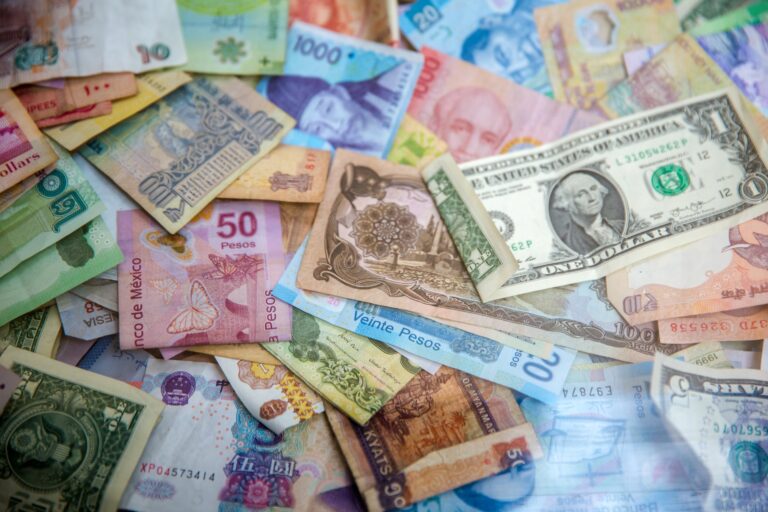When it comes to understanding money, you’ll often hear the term “fiat currencies.” But what exactly does it mean, and why is it so important in modern economies? This blog breaks down what fiat currency is, how it works, and why it matters in today’s global financial system. By the end, you’ll have a clear grasp of fiat money and how it shapes the world around us.
What Is Fiat Currency?
Fiat currency refers to money that has no intrinsic value and is not backed by a physical commodity, such as gold or silver. Instead, it derives its value solely from the trust and authority of the government that issues it. Simply put, fiat money’s worth depends entirely on people’s belief that it holds value and can be used to trade goods and services.
Most modern currencies, like the US dollar, the Euro, and the Japanese yen, are fiat currencies.
Key Characteristics of Fiat Currency
To understand fiat currency better, here are its major characteristics:
- Lack of Intrinsic Value: Unlike gold coins or commodity-backed money, fiat currency itself has no inherent worth. It’s simply paper, metal, or digital code.
- Government-Backed Value: The currency’s value is supported by the issuing government’s economy and regulatory systems.
- Unlimited Supply: Unlike resources like gold, governments can print fiat money as needed, which brings both flexibility and the risk of inflation.
- Legal Tender: Fiat currencies are recognized by governments as an official means of payment within their economies.
How Fiat Currencies Work
Fiat currencies operate on trust. A $20 bill works because people agree that two decades of trust in the U.S. banking system backs its value. This includes trust that the money:
- Will retain its value over time.
- Can be exchanged for goods and services.
- Is accepted widely within and beyond the issuing country.
Central banks manage fiat currencies by regulating monetary supply and interest rates, aiming to strike a balance between economic inflation and growth.

The History of Fiat Currency
Fiat currency isn’t a modern invention. It traces its roots to 11th century China during the Song Dynasty, which introduced paper money as a form of legal tender. By the 20th century, the global economy shifted entirely toward fiat systems, notably after the abandonment of the gold standard in the 1970s. The shift enabled governments to have control over their monetary policies without being tied to a fixed asset like gold.
Benefits of Fiat Currency
Fiat currencies have some key advantages that make them the dominant monetary system today:
- Economic Flexibility: Governments can adjust monetary supply to respond to economic crises or stimulate growth.
- Easier Trade: Using widely accepted fiat currencies simplifies trade and commerce on both domestic and international levels.
- Cost-Effective Production: Producing paper money or digital currency is far cheaper than mining or obtaining commodities like gold.
Drawbacks and Risks of Fiat Currency
While fiat currencies are convenient and vital to modern economies, they come with risks:
- Inflation: Printing too much money can lead to inflation, eroding the purchasing power of the currency.
- Loss of Trust: The system collapses if people lose faith in the government or central bank backing the currency.
- Economic Dependency: Fiat systems rely heavily on robust regulation and governance, which could pose challenges during political or economic instability.
How Fiat Currencies Compare to Commodity Money and Cryptocurrencies
Commodity Money
Historically, commodity money (like gold and silver) was limited by physical supply. Its intrinsic value came from its material worth. Fiat currencies replaced commodity money because they are more practical for complex and scalable economies.
Cryptocurrencies
Cryptocurrencies, like Bitcoin or Ethereum, are seen as alternatives to fiat money. Unlike fiat, cryptocurrencies are decentralized and limit supply through algorithms. While cryptos are gaining traction, their volatile prices and lack of universal acceptance mean they are unlikely to replace fiat money entirely anytime soon.
FAQs About Fiat Currency
What makes fiat currency valuable?
Fiat currency derives its value from the trust of the people and the authority of the issuing government. Central banks maintain this trust through monetary policies and economic stability.
Is cryptocurrency a type of fiat currency?
No, cryptocurrencies differ from fiat currencies. While fiat money is issued and controlled by a centralized authority (like a government), cryptocurrencies are decentralized and operate on blockchain technology.
Can fiat currency fail?
Yes, fiat currencies can fail if people lose trust in the currency or if economic or political situations cause hyperinflation or instability (e.g., Zimbabwe’s hyperinflation crisis in the 2000s).
What’s the difference between fiat money and the gold standard?
Under the gold standard, currency was tied to a fixed amount of gold. Fiat money, on the other hand, has no physical asset backing it and is supported by government policy and trust.
Why Fiat Currencies Are Here to Stay (For Now)
Despite their drawbacks, fiat currencies are likely to remain the backbone of global economies for the foreseeable future. They provide governments with the flexibility needed to manage economic growth and allow for smoother trade and commerce between nations. While alternatives like cryptocurrencies challenge the monopoly of fiat money, they are not yet equipped to replace its stability and universal acceptability.
Understanding the fundamental principles of fiat currency is vital for any professional or individual navigating financial systems today. If you’re ready to explore more about financial topics and how they relate to your world, keep reading our blogs for expert insights and practical advice.
